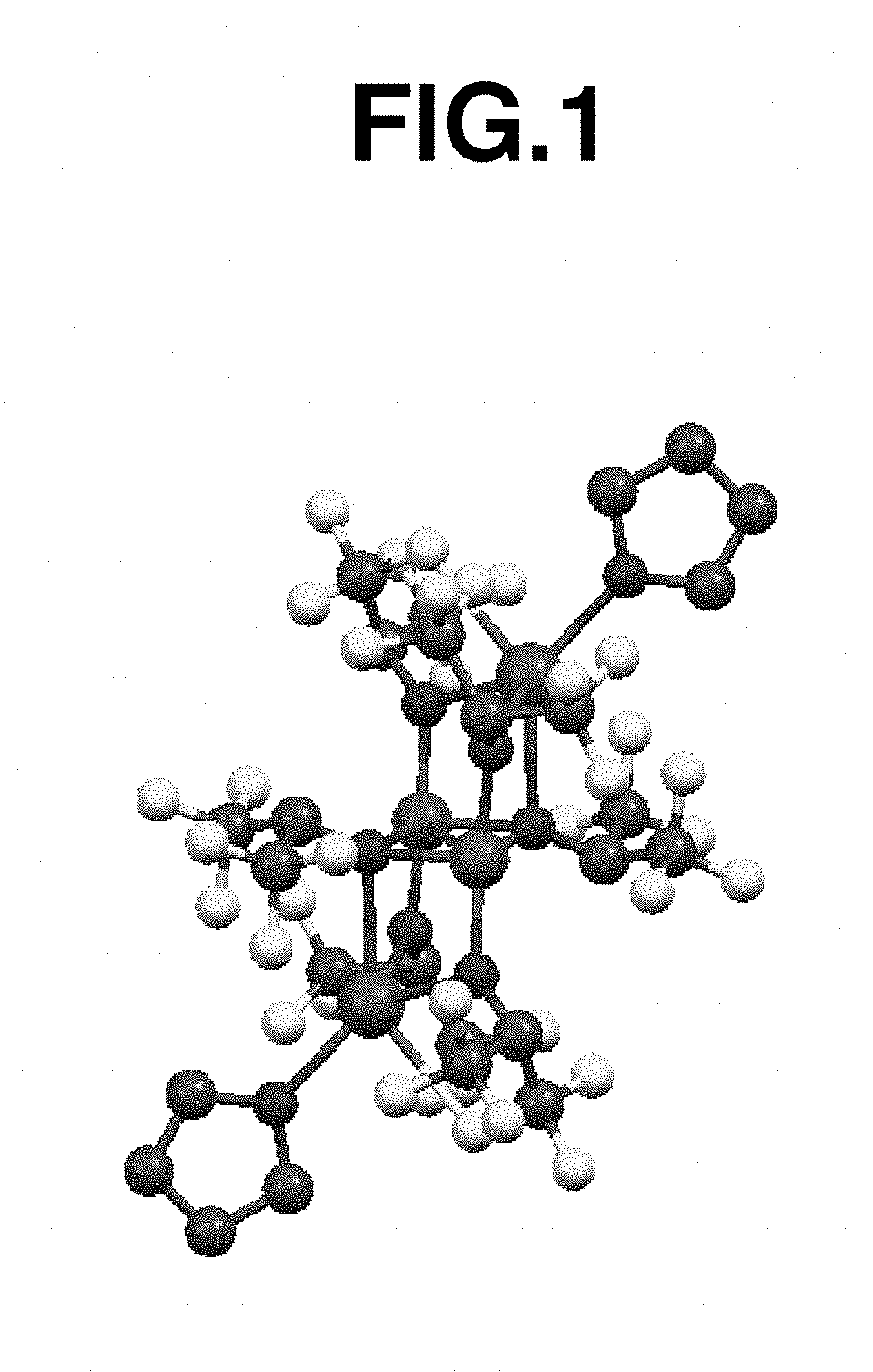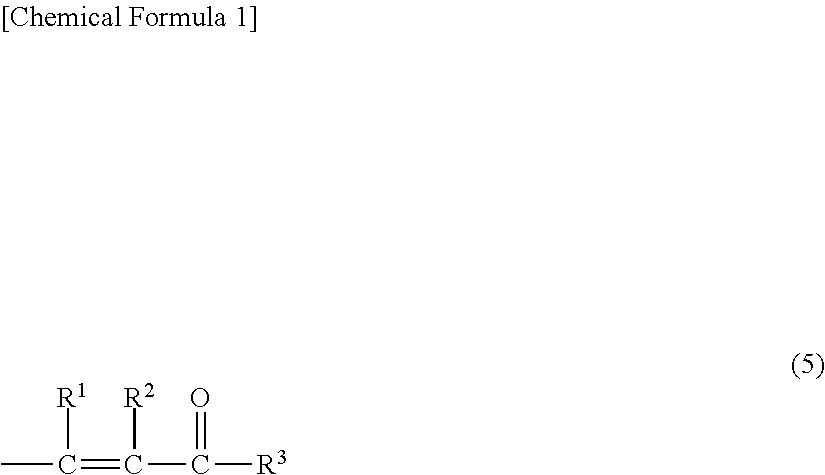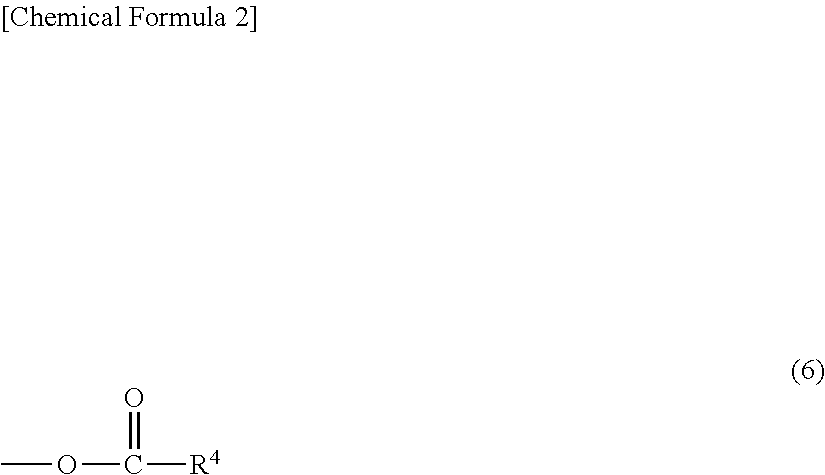Hydrosilylation reaction catalyst
a reaction catalyst and hydrogen bonding technology, applied in the direction of organic compounds/hydrides/coordination complex catalysts, physical/chemical process catalysts, organic chemistry, etc., can solve the problems of side reaction due to internal rearrangement of olefin, low selectivity of - and -adducts, and high cost of all center metals pt, pd and rh. , to achieve the effect of high activity, easy handling and shelf stability
- Summary
- Abstract
- Description
- Claims
- Application Information
AI Technical Summary
Benefits of technology
Problems solved by technology
Method used
Image
Examples
synthesis example 1
Synthesis of iron pivalate
[0315]With reference to J. Cluster Sci., 2005, 16, 331, the compound was synthesized by the following procedure.
[0316]A 50 mL two-neck recovery flask equipped with a reflux tube was charged with 0.86 g (15.4 mmol) of reduced iron (Kanto Kagaku Co., Ltd.) and 3.50 g (34.3 mmol) of pivalic acid (Tokyo Chemical Industry Co., Ltd.), which were stirred at 160° C. for 12 hours. On this occasion, the reaction solution turned from colorless to green. Further 2.50 g (24.5 mmol) of pivalic acid was added to the solution, which was stirred at 160° C. for 19 hours. Thereafter, the reaction solution was filtered, and the filtrate was combined with the recovered supernatant and dried in vacuum at 80° C. The resulting solid was washed with Et2O, obtaining a green solid (2.66 g, yield 67%).
FT-IR (KBr) ν: 2963, 2930, 2868, 1583, 1523, 1485, 1457, 1427, 1379, 1362, 1229, 1031, 938, 900, 790, 608, 576, 457 cm−1
synthesis example 2
Synthesis of cobalt pivalate
[0317]With reference to Russ. Chem. Bull., 1999, 48, 1751, the compound was synthesized by the following procedure.
[0318]A 50 mL two-neck recovery flask equipped with a reflux tube was charged with 1.15 g (6.5 mmol) of cobalt acetate (Wako Pure Chemical Industries, Ltd.), 1.55 g (15.2 mmol) of pivalic acid, and 0.5 mL (2.5 mmol) of pivalic anhydride (Tokyo Chemical Industry Co., Ltd.), which were stirred at 160° C. for 1 hour. On this occasion, the reaction solution turned from thin purple to purple. Thereafter, the reaction solution was dried in vacuum at 80° C. The resulting solid was washed with pentane and Et2O and dried, obtaining a purple solid (1.15 g, yield 68%).
FT-IR (KBr) ν: 2963, 2929, 2868, 1599, 1524, 1485, 1457, 1420, 1379, 1363, 1229, 1032, 938, 900, 792, 613, 585, 460 cm−1
synthesis example 3
Synthesis of iron complex A
[0319]A 100 mL two-neck recovery flask with a stirrer was charged with 550 mg (12.6 mmol) of NaH (55%) in paraffin and 20 mL of Et2O, and cooled down to 0° C. To the flask, 2.50 mL (24.1 mmol) of 1,1,1,3,3,3-hexafluoroisopropanol was slowly added dropwise, followed by stirring at 25° C. for 1 hour. Thereafter, the reaction product was dried in vacuum and washed 3 times with hexane, obtaining 2.45 g of sodium 1,1,1,3,3,3-hexafluoroisopropoxide (abbreviated as NaHFIP, hereinafter).
[0320]In a nitrogen-blanketed glove box, 0.10 g (0.79 mmol) of FeCl2 and 5 mL of toluene were added to a screw-top vial with a stirrer. A solution of 0.33 g (1.71 mmol) of NaHFIP in 1 mL of THF was added dropwise to the vial, followed by stirring at 25° C. for 1 week. Thereafter, the solid was removed by centrifugation, and the reaction product was recrystallized at −30° C., obtaining iron complex A (78 mg, yield 15%). The result of x-ray crystallography analysis on iron complex A ...
PUM
| Property | Measurement | Unit |
|---|---|---|
| temperature | aaaaa | aaaaa |
| valence number | aaaaa | aaaaa |
| reactivity | aaaaa | aaaaa |
Abstract
Description
Claims
Application Information
 Login to View More
Login to View More - R&D
- Intellectual Property
- Life Sciences
- Materials
- Tech Scout
- Unparalleled Data Quality
- Higher Quality Content
- 60% Fewer Hallucinations
Browse by: Latest US Patents, China's latest patents, Technical Efficacy Thesaurus, Application Domain, Technology Topic, Popular Technical Reports.
© 2025 PatSnap. All rights reserved.Legal|Privacy policy|Modern Slavery Act Transparency Statement|Sitemap|About US| Contact US: help@patsnap.com



